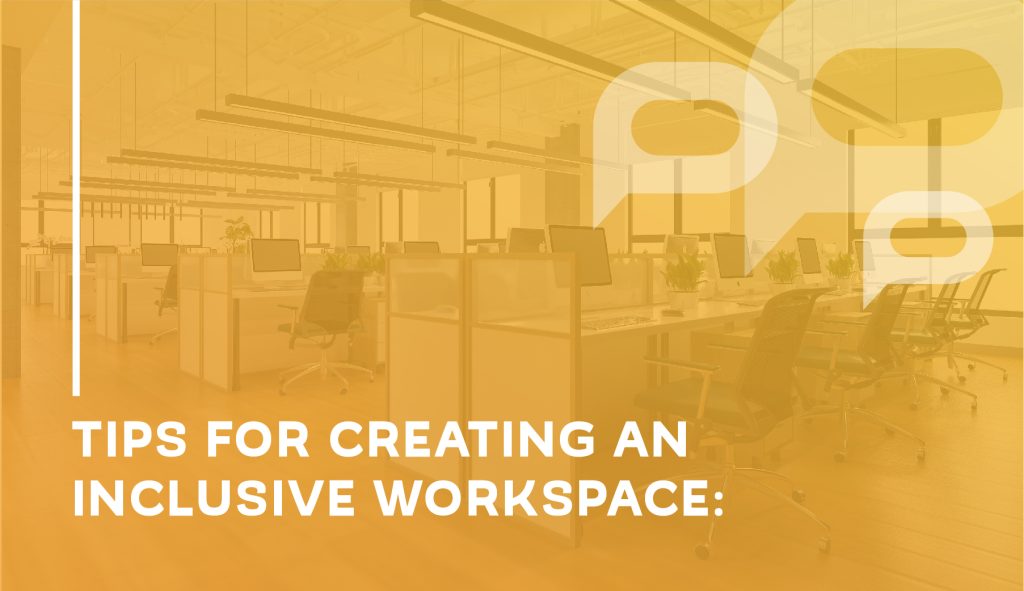Tips for Creating an Inclusive Workspace
Whether your company is large or small, recruiting a diverse workforce and enacting policies that promote equity and inclusion should be a top priority of human resources.
This includes welcoming deaf and hard-of-hearing people, especially considering many have job-related and age-related hearing loss. But it’s not enough to hire minorities and people with disabilities. Your workplace – and their workspace – should be inclusive and address any necessary accommodations.
All employees need the proper training, technology, and equipment to succeed on the job. For employees who are hard of hearing, simple tasks like talking on the phone or attending a Zoom meeting pose challenges.
Hearing loss affects an estimated 48 million people in the United States, including 4% of people ages 45-64. While rates increase with age, hearing loss still affects many working-aged teens and adults.
Beyond the interview and hiring process, it’s crucial your company cultivates an inclusive work environment. Safety and noise concerns should be taken seriously, and reasonable accommodations related to workspaces should be granted.
6 ways to create an inclusive workspace for employees with hearing loss
- Make sure deaf and hard of hearing employees feel welcome. This starts with the recruitment and training process and continues once they join the team.
- Establish a formal policy regarding your company’s commitment to diversity, equity, and inclusion and include it on the application and new employee materials.
- Designate a contact person, email address, and accessible phone number (TTY) for applicants to request accommodations throughout the hiring process.
- Have a list of sign language interpreters if one is requested for the interview and provide written copies of the interview questions and other hiring materials.
- During the interview, make eye contact and talk slowly if the applicant reads lips—direct questions to them and not the interpreter.
- Set up their workstation for success. For office workers who are hard of hearing, you want to make sure work areas are free from excessive noise and distractions.
- You may need to give them a quiet office, eliminate unnecessary background noise, or locate them away from the break room or loud office equipment.
- Make sure to comply with all ADA requirements and accommodation requests, such as a sign language interpreter, captioning services, or other assistive technology.
- You may need to provide a captioned phone (which provides real-time speech-to-text) or a video telephone for video relay service (VRS), along with flashing lights to indicate new messages and other alerts.
Many work environments have hazardous noise levels, including manufacturing, construction, mining, and military jobs.
- Ensure the company meets all occupational health and safety standards
- Workers should not be exposed to noise at a level above 85 decibels (dBA) over eight continuous hours
- Provide appropriate protective equipment such as earplugs and earmuffs
- Encourage and offer regular hearing tests
- Implement policies to reduce all workers’ exposure to excessive noise and take concerns seriously
- Create accessible training materials and announcements with captions and transcripts. Dedicate resources to make company communications inclusive and accessible.
- Providing everything in text format: employee handbooks, internal communications, announcements, Zoom meetings, webinars, and training sessions.
- You can do this by writing emails, using captioning services, and transcribing any video content.
- Internal electronic communication systems are also growing in popularity. These have “chat” features that allow quick, ongoing communication among employees.
- Plan for emergencies with notifications that are visual in addition to auditory alerts. Emergency alarms and warning sirens leave deaf and hard-of-hearing employees vulnerable and at risk.
- Install flashing lights and other visual notifications as part of the building’s alarm system in an emergency or evacuation due to fire, weather, or other security threats.
- Implement a text/email system to contact deaf and hard-of-hearing employees during emergencies.
- Consider using a “buddy system” to alert employees of intercom announcements and evacuations.
- Review emergency procedures and evacuation routes, including exits and emergency staircases, with all employees during orientation and practice safety drills.
- Ensure meetings, corporate gatherings, and outside training are fully accessible.
- If the meeting is in person, make sure the room layout and lighting provide good visibility to screens, speakers, and visual aids such as Prezi and PowerPoint slides.
- Make the presentation slides and/or meeting audio and video available for replay later with captions or transcripts.
- Establish meeting protocols in advance, especially if the meeting is in a virtual format. Be mindful of hard-of-hearing employees, watch for signals that the employee wants to participate, and be a good facilitator. Allow only one person speaks at a time to make it easier to follow conversations.
- Hire a captioner to provide CART services or real-time captioning, delivered onsite or during a virtual webinar or meeting.
- Other captioning services include full transcripts and post-production captioning for pre-or post-recorded videos. These resources can benefit employees with and without hearing loss and be used in the future.
- Remember off-site, contracted, and virtual events too. Accessibility applies to webinars, conferences, and employee team-building activities. You’re still responsible for providing necessary accommodations even if you’ve contracted with an outside vendor to host training as an employer.
- Ask how they are doing and if their needs are being met on the job. Even with the best of intentions, your company’s equity and inclusion efforts may fall short from time to time.
- If you’re part of human resources or a direct supervisor, check in with your deaf and hard-of-hearing employees regularly.
- Ask how you can best accommodate them and follow through if they request something.
- Inquire about their preferred assistive technology (and if it’s in the budget), their overall workspace, and how they want to communicate and contribute in meetings.
- Create a committee dedicated to diversity, equity, and inclusion, and bring together employees with various disabilities to serve on it.
- Do your research on hearing loss and offer up genuine empathy and understanding. Be responsive to concerns and complaints.
Visit Caption Pros to learn more about our award-winning captioners and captioning services. We offer creative solutions to make your workplace and training events accessible to all employees. Craft an inclusive workspace today!







